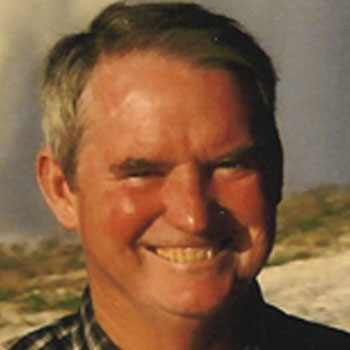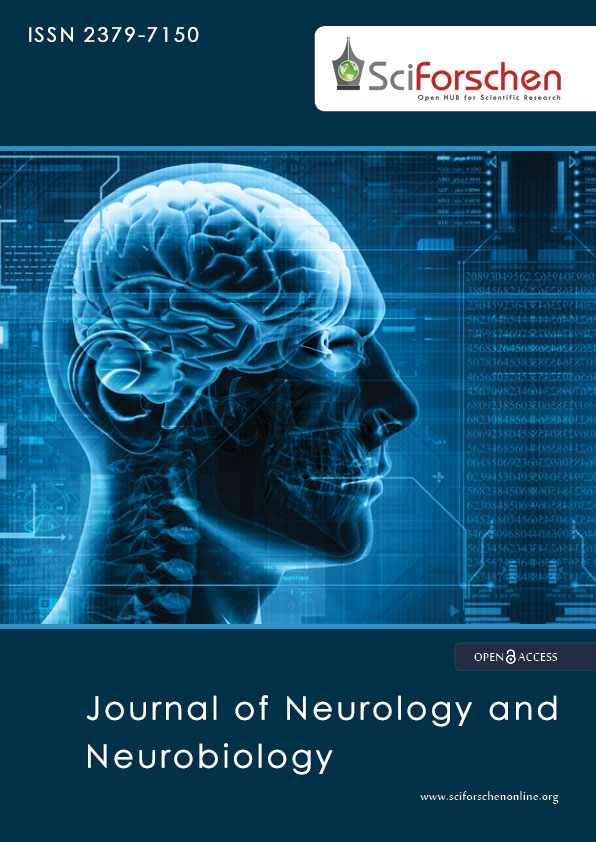
Professor of Neurology
University of California at Davis
USA
Education
- University of California, Davis 06/1968 Engineering Bachelor Degree
- University of California, San Diego 06/1972 Medicine Medical Degree
Profile
An internationally renowned clinical neurologist and neuroscientist, Frank Sharp, M.D. joined the UC Davis and the MIND Institute faculty in June 2004. Research in his laboratory focuses on molecular neurobiology, genomics, neural cell injury and cell death and the blood genomics of neurological disease. Prior to his appointment at UC Davis, Sharp had a distinguished clinical and research career at UC San Diego, UC San Francisco and the University of Cincinnati, making groundbreaking contributions to new fields of study and new insights into brain function and disease. Among these contributions were: first laboratory to show proof of principle for using blood genomics to detect pathological events in the animal and human brain, paved the way for performing PET and fMRI studies in humans, and first to demonstrate that a transcription factor can be used to map active neurons. Sharp is currently on the editorial boards of Journal of Cerebral Blood Flow and Metabolism, Medical Genomics, Brain Research and Journal of Neurochemistry. He has been a member of AHA grant review committees, and is currently a permanent member of the BINP grant review committee at the National Institutes of Health.
Research Interest
Frank Sharp’s research focuses on molecular neurobiology, genomics, neural cell injury and cell death and the blood genomics of neurological disease. Prior to his appointment at UC Davis, Dr. Sharp had a distinguished clinical and research career at UC San Diego, UC San Francisco and the University of Cincinnati, making groundbreaking contributions to new fields of study and new insights into brain function and disease. Among these contributions were:
- First laboratory to show proof of principle for using blood genomics to detect pathological events in the animal and human brain.
- Paved the way for performing PET and fMRI studies in humans.
- First to demonstrate that a transcription factor can be used to map active neurons.
Professional Activities:
Previous Positions and Employment
1972-73 |
Medical Internship, Duke University Hospital, Durham, North Carolina |
1973-76 |
Research Associate, National Institutes of Mental Health; Dr. Edward V. Evarts Laboratory |
1976-79 |
Neurology Resident, University of California, San Francisco |
1979-83 |
Assistant Professor of Neurosciences, University of California, San Diego |
1983-84 |
Associate Professor of Neurosciences, University of California, San Diego |
1984-88 |
Associate Professor of Neurology, University of California, San Francisco |
1984-99 |
Staff Physician, VA Medical Center and UCSF, San Francisco, California |
1990-95 |
Chief of Neurology, VA Med Center, San Francisco, California; Vice-Chairman of Neurology, |
1988-99 |
Professor of Neurology, University of California, San Francisco |
1999-04 |
Professor and Vice-Chairman for Research, Department of Neurology, University of Cincinnati |
Current Position
2004-Present |
Professor of Neurology, M.I.N.D. Institute and Dept Neurology, University of California at Davis |
2006-Present |
Vice Chairman, Department of Neurology, University of California at Davis |
Other Experience and Professional Memberships
2000-Present |
Editorial Board, Journal of Cerebral Blood Flow & Metabolism |
2002-Present |
Editorial Board, Journal of Neurochemistry |
2008-Present |
Senior Editor, BMC Medical Genomics for Neurology and Psychiatry |
2009-Present |
Editorial Board, Translational Stroke Research |
1994-Present |
American Heart Association BRAIN study sections (‘94, ‘99, ‘01, ‘02, ‘03, ’05, ’08,’10,’13,’15) |
2001-06 |
NIH/NINDS Study Section, Permanent Member NSD-A |
2004 |
NIH/NINDS Intramural Program Review Panel |
2005 |
NIH/NIMH Intramural Program Review Panel |
2008-13 |
NIH/NINDS Study Section, Permanent Member BINP |
2010-13 |
NIH/NINDS Chairman of BINP Study Section |
2013-Present |
NIH/NINDS Permanent member NSD-A study section |
Honors and Awards
Publications
- Hemorrhagic transformation after ischemic stroke in animals and humans. Jickling GC, Liu D, Stamova B, Ander BP, Zhan X, Lu A, Sharp FR. J Cereb Blood Flow Metab. 2014 Feb;34(2):185-99
- Inhibition of SRC family kinases protects hippocampal neurons and improves cognitive function after traumatic brain injury. Liu da Z, Sharp FR, Van KC, Ander BP, Ghiasvand R, Zhan X, Stamova B, Jickling GC, Lyeth BG. J Neurotrauma. 2014 Jul 15;31(14):1268-76
- Distinctive RNA expression profiles in blood associated with Alzheimer disease after accounting for white matter hyperintensities. Bai Z, Stamova B, Xu H, Ander BP, Wang J, Jickling GC, Zhan X, Liu D, Han G, Jin LW, DeCarli C, Lei H, Sharp FR. Alzheimer Dis Assoc Disord. 2014 Jul-Sep;28(3):226-33
- Gene expression in peripheral immune cells following cardioembolic stroke is sexually dimorphic. Stamova B, Jickling GC, Ander BP, Zhan X, Liu D, Turner R, Ho C, Khoury JC, Bushnell C, Pancioli A, Jauch EC, Broderick JP, Sharp FR. PLoS One. 2014 Jul 18;9(7):e102550
- Genome wide differences of gene expression associated with HLA-DRB1 genotype in multiple sclerosis: a pilot study. Apperson ML, Tian Y, Stamova B, Ander BP, Jickling GC, Agius MA, Sharp FR. J Neuroimmunol. 2013 Apr 15;257(1-2):90-6.
- RNA in blood is altered prior to hemorrhagic transformation in ischemic stroke. Jickling GC, Ander BP, Stamova B, Zhan X, Liu D, Bsc LR, Verro P, Khoury J, Jauch EC, Pancioli A, Broderick JP, Sharp FR. Ann Neurol. 2013 Mar 7. doi:
- Prediction of cardioembolic, arterial, and lacunar causes of cryptogenic stroke by gene expression and infarct location. Jickling GC, Stamova B, Ander BP, Zhan X, Liu D, Sison SM, Verro P, Sharp FR. Stroke. 2012 Aug;43(8):2036-41.
- Ischemic transient neurological events identified by immune response to cerebral ischemia. Jickling GC, Zhan X, Stamova B, Ander BP, Tian Y, Liu D, Sison SM, Verro P, Johnston SC, Sharp FR. Stroke. 2012 Apr;43(4):1006-12
- Integrated analysis of mRNA and microRNA expression in mature neurons, neural progenitor cells and neuroblastoma cells. Liu DZ, Ander BP, Tian Y, Stamova B, Jickling GC, Davis RR, Sharp FR. Gene. 2012 Mar 10;495(2):120-7.
- Effects of gender on gene expression in the blood of ischemic stroke patients. Tian Y, Stamova B, Jickling GC, Liu D, Ander BP, Bushnell C, Zhan X, Davis RR, Verro P, Pevec WC, Hedayati N, Dawson DL, Khoury J, Jauch EC, Pancioli A, Broderick JP, Sharp FR. J Cereb Blood Flow Metab. 2012 May;32(5):780-91
- Kennedy C, DesRosiers M, Reivich M, Jehle J, Sharp FR, Sokoloff L (1975) Mapping of functional neural pathways by autoradiographic survey of local metabolic rate with (14C)-deoxyglucose. Science 187: 850-853.
- Schwartz WJ, Sharp FR, Gunn RH, Evarts EV (1976) Lesions of ascending dopaminergic pathways decrease forebrain glucose uptake. Nature 261: 155-157.
- Kilduff TS, Sharp FR, Heller HC (1982) 14C 2-deoxyglucose uptake in ground squirrel brain during hibernation. Journal of Neuroscience 2: 143-157.
- Sagar SM, Sharp FR, Curran T (1988) Expression of c-fos protein in brain: Metabolic mapping at the cellular level. Science 240: 1328-1331.
- Aronin N, Sagar SM, Sharp FR, Schwartz WJ (1990) Light regulates Fos expression in the suprachiasmatic nuclei. Proceedings of the National Academy of Sciences 87: 5959-5962.
- Sharp FR, Sagar SM, Marsh T, Hicks K, Lowenstein DH, and Hisanga K (1991) c-fos mRNA, Fos and Fos-related antigen induction by hypertonic saline and stress, Journal of Neuroscience, 11:2321-2331.
- Sharp FR, Jasper P, Hall J, Noble L, Sagar SM (1991) MK801 and ketamine induce heat shock protein HSP72 in injured neurons in posterior cingulate and retrosplenial cortex, Annals of Neurology, 30: 801-809.
- Liu J, Nickolenko J, Sharp FR (1994) Morphine induction of c-fos and junB in striatum and nucleus accumbens is mediated by D1 and NMDA receptors. Proceedings National Academy of Sciences, 91: 8537-8541.
- Bontempi B, Sharp FR (1997) Systemic morphine-induced Fos protein in the rat striatum and nucleus accumbens is regulated by m1 opioid receptors in the substantia nigra and ventral tegmental area and requires D1 and NMDA receptor co-activation, Journal of Neuroscience 17 (21): 8596-8612.
- Liu J, Solway K, Messing RO, Sharp FR.(1998) Increased neurogenesis in the dentate gyrus after transient global ischemia in gerbils. Journal of Neuroscience, 18: 7768-7778.
- Rajdev S, Hiroshi Y, Hara K, Weinstein P, Mestril R, Dillmann W, Sharp FR (2000) Mice that over express rat heat shock protein70 (HSP70) are protected against cerebral infarction, Annals of Neurology, 47 (6): 782-791.
- Bergeron M, Gidday JM, Yu AY, Semenza GL, Ferriero DM, Sharp FR (2000) Hypoxia-inducible factor-1 (HIF-1) role in hypoxia-induced ischemic tolerance in neonatal rat brain, Annals of Neurology, 48(3): 285-296.
- Sharp FR, Tomitaka M, Bernaudin M, Tomitaka S (2001) Psychosis: Pathological activation of limbic thalamocortical circuits by psychomimetics and schizophrenia? Trends in Neurosciences, June, 24 (6): 330-334.
- Bernaudin M, Tang Y, Reilly MR, Petit E, Sharp FR (2002) Brain genomic response following hypoxia and re-oxygenation in the neonatal rat: Identification of genes that might contribute to hypoxia-induced ischemic tolerance, Journal of Biological Chemistry, Oct 18; 277 (42):39728-39738.
- Ran R, Zhou G, Lu A, Tang Y, Rigby AC, Vaux DL, and Sharp FR (2004) Hsp70 impairs NF-kB signaling and promotes TNF-alpha-mediated apoptosis, Genes and Development, 18 (12) 1466-1481
- Ran R, Zhou G, Lu A, Zhang L, Tang Y, Rigby AC, Sharp FR. (2004) Hsp70 mutant proteins modulate additional apoptotic pathways and improve cell survival. Cell Stress Chaperones. Autumn;9(3):229-242
- Tang Y, Schapiro MB, Franz DN, Patterson BJ, Hickey FJ, Schorry EK, Hopkin RJ, Wylie M, Narayan T, Glauser TA, Gilbert DL, Hershey AD, Sharp FR . Blood expression profiles for tuberous sclerosis complex 2, neurofibromatosis type 1, and down's syndrome. Annals of Neurology 2004 Dec;56(6):808-14
- Kuan CY, Schloemer AJ, Lu A, Burns KA, Weng WL, Williams MT, Strauss KI, Vorhees CV, Flavell RA, Davis RJ, Sharp FR, Rakic P (2004) Hypoxia-ischemia induces DNA synthesis without cell proliferation in dying neurons in adult rodent brain. Journal of Neurosscience Nov ;24(47):10763-10772
- Sharp FR and Bernaudin M (2004) HIF1 and oxygen sensing in the brain. Nature Review Neuroscience 5(6):437-448
- Liu DZ, Ander BP, Xu H, Shen Y, Kaur P, Deng W, Sharp FR. Blood-brain barrier breakdown and repair by Src after thrombin-induced injury. Ann Neurol. 2010 Apr;67(4):526-33.
- Stamova B, Xu H, Jickling G, Bushnell C, Tian Y, Ander BP, Zhan X, Liu D, Turner R, Adamczyk P, Khoury JC, Pancioli A, Jauch E, Broderick JP, Sharp FR. Gene expression profiling of blood for the prediction of ischemic stroke. Stroke. 2010 Oct;41(10):2171-7.
- Jickling GC, Xu H, Stamova B, Ander BP, Zhan X, Tian Y, Liu D, Turner RJ, Mesias M, Verro P, Khoury J, Jauch EC, Pancioli A, Broderick JP, Sharp FR. Signatures of cardioembolic and large-vessel ischemic stroke. Ann Neurol. 2010 Nov;68(5):681-92
- Sharp FR, Jickling GC, Stamova B, Tian Y, Zhan X, Liu D, Kuczynski B, Cox CD, Ander BP. Molecular markers and mechanisms of stroke: RNA studies of blood in animals and humans. J Cereb Blood Flow Metab. 2011 Jul;31(7):1513-31

